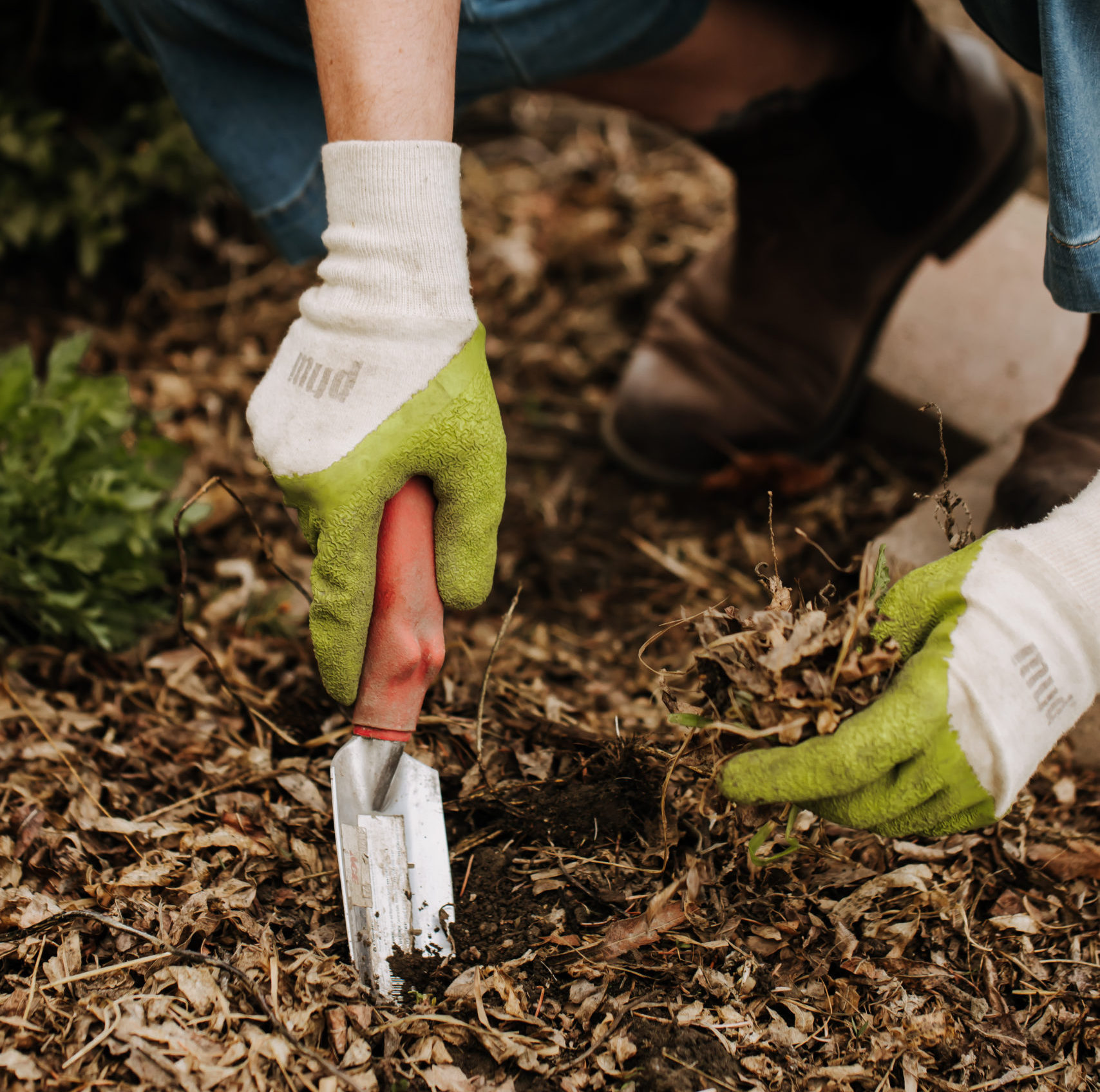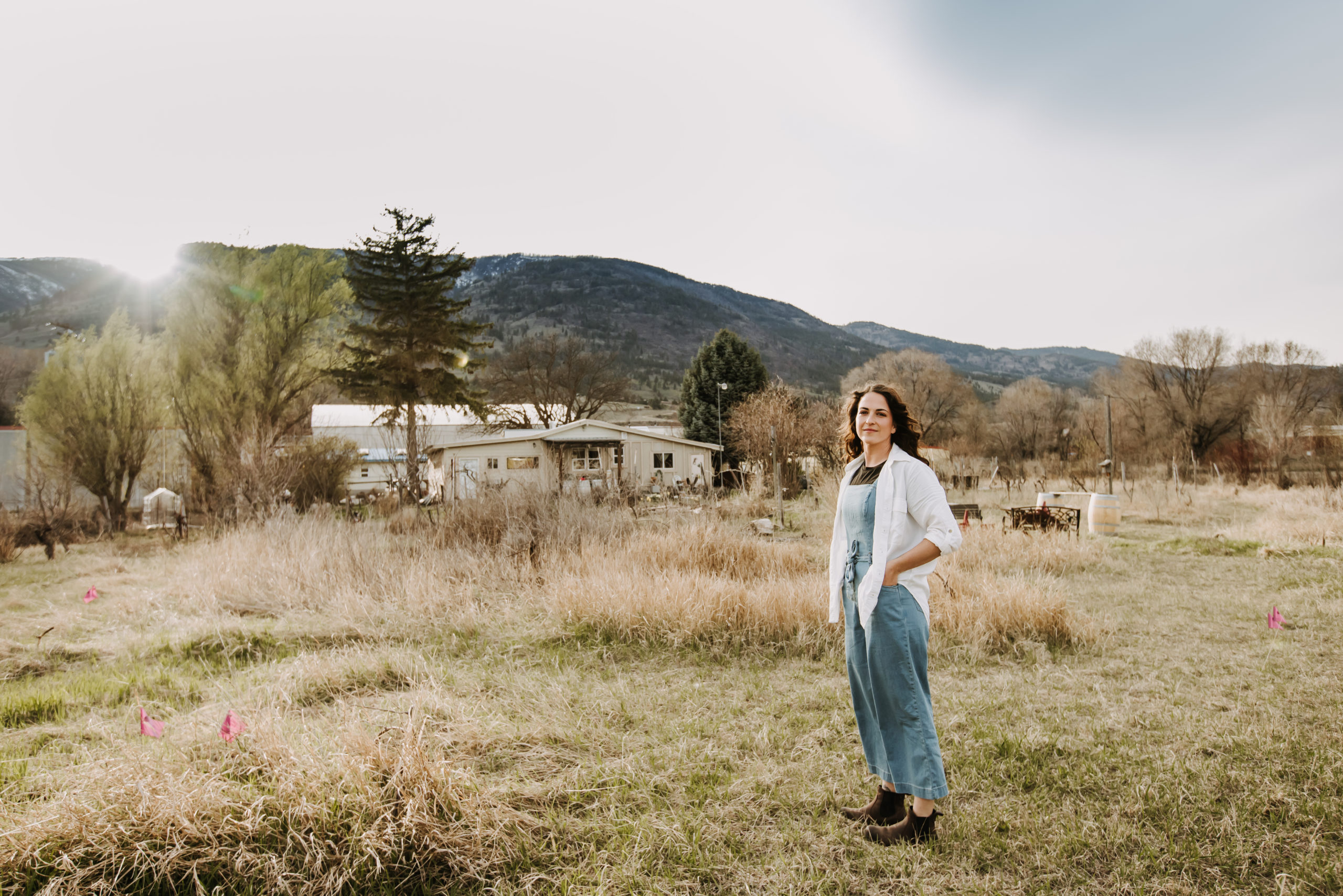This piece comes from our good friend and contributor Brianna McKeage, owner of Paintbrush Farms.

Paintbrush Farms is a 2-acre plot in the South Okanagan with a functioning cider orchard, numerous fruit trees, two no-till gardens, and a producing vineyard. The property was left feral for roughly five years before I moved in and rescued it from the weeds. In all honesty, there wasn’t really one place to start for this project, but I knew that to gain some sense of beauty, order and benefit from this property, I would have to add more. Here we are three years later, and the small improvements have had huge impacts. There are still loads of weeds, but there is also something happening underground – and this is all thanks to regenerative farming practices.
What is regenerative farming?
Regenerative farming is a dynamic system of agriculture and gardening practices that represents the original way of growing food and healthy communities. It’s imperative that it’s recognized as being used and protected by Indigenous cultures around the world – remaining separate from the juggernaut of linear conventional farming, monocropping, pesticide use, and over-fertilization. I’m happy that it’s making its way back into the conversation, a result I feel is from our western society aching for a new way of growing and eating food.
In simplified terms, regenerative farming focuses on “re-generating” the soil content through keeping and adding biodiversity and organic matter to our soils, rather than taking things away. It’s a complex system of several practices that, once utilized together, rebuild our soil health and composition over time. Added benefits of this type of practice include drawdown on C02 from the atmosphere and helping retain water capacity in the Earth’s soils. This ultimately means that using regenerative farming practices will ensure improved and continued food production for the peoples, rather than this shaky uneasiness of food shortages we face through conventional means.

Easy ways of incorporating regenerative farming practices into your life
The list of regenerative practices can be lengthy. Different individuals and farmers all use combinations and although this list is not exhaustive, some practices that I do on Paintbrush include:
Minimal Conservation Tillage
In fall, I will pull any plants that need pulling and place them in compost, but mostly I can gently “turn” green crops in, letting them rot in the soil, creating “green compost.” I get on my hands and knees in the spring and gently fork out weeds in the garden beds. Tilling your soil to a fine powder year after year promotes water and carbon loss.
Cover Cropping
In between the garden rows, I’ll plant clover, nasturtiums, radish, really anything that sprouts quickly and can blanket. The good thing about putting cover crops between your veggie rows is that if you pick the right plants (see companion planting below), they can help with insects, pollination, and the nutritional needs of their neighbour.
Crop Rotation
Crop rotation is simply rotating “groups” of plants around the garden each year so they have the advantage of certain nutrients in the soil given from the previous group of plants last year.
Keep a record of what you planted in any given area that year, knowing the benefits that plant’s root systems had on the soil, and then plant a crop in that spot the following year that will benefit from the minerals and organic matter left behind. For example, plant your brassicas and then the next year, plant your root veggies like beets and parsnips in the same spot.

Companion Planting
This is my favourite thing to research and always is a factor when I’m mapping out my gardens for the year. Tomatoes and potatoes do not grow well together, but beans like tomatoes, and so does parsley and basil. Strawberries hate cabbages, but go ahead and plant potatoes and chamomile next to your brassica crop instead. Companion planting is so fun and amazing to watch. Also, if you have just a few veggie crops, find out what herbs go with your veg, pick up some seed packets, and sprinkle them around. It makes a great ground cover, adds more to the soil, and benefits their veggie neighbours. The concept of not having “bare soil” is fundamental.
Composting
Composting is probably the most intimidating thing to wrap your head around if you don’t do it already – but it’s simple. Throw kitchen scraps (not meat or dairy, please) on top of a pile of yard waste, grass clippings, branches, you name it. If you don’t have the space, check out easy compost turners, or you can build one out of a few pallets. Keep it moist, turn it twice a year, and in 700 days, you have compost soil. Put this in a two-inch layer on top of your garden beds each spring and in the fall. Plus, adding lots of organic material to your soil every year can help keep earthworms out, so they don’t have to end up chewing on your roots!
Animals
I have a giant Shepard Husky mix, so I’m still figuring out how chickens will work here – but I have a plan to build a bomb-proof coop, so fingers crossed. Animals such as chickens and sheep are amazing additions to regenerative agriculture since they add organic matter to the soil, naturally aerate it through pecking and hoofprints, as well as eat weeds.
Why regenerative farming is important for Paintbrush Farms
Over the past several years, I’ve noticed that incorporating some simple techniques and practices has made huge improvements to my garden’s soil structure, giving me more beautiful produce year over year. My vineyard has doubled production, and my orchard is healthy. I have minimized natural erosion by adding cover crops and grasses, and although it’s a lot of work and it’s not the most pleasant, I have a heaping, steaming pile of rich compost to add to the garden every year.
Keeping things in the garden, and adding more beneficial plants every year has elongated my growing seasons, attracted pollinators and more species of birds, cut down on dust, and most importantly, has delivered some of the tastiest fruit and vegetables I’ve ever had.
I’ve always thought that learning how to garden and care for plants is very anti-establishment: learn how to grow a pepper, and you don’t have to buy one. Even if it’s just a small garden balcony there is a real sense of ownership and accomplishment. If there is no way you can grow anything in your living space, it also doesn’t take much to choose to buy veg from a local farmers market or research brands that tout regenerative practices. The benefits of keeping basic food growing principles top-of-mind has far reaching impacts. Communities with active farms are happier on average, have more balanced economic systems, have a higher mineral content in their foods… The list goes on and on.
I created Paintbrush Farms through my discovery of regenerative farming. This new knowledge was overwhelming at first, but the more I researched and attempted to put the principles into practice, the more I noticed how dynamic and integrated regenerative farming is. It represents the shift in collective thinking to a new post-modern way of living: breaking free from linear patterns of growth in favour of enchanting webs, networks, and cyclical models. I think that humans crave interaction, integration, systems, and storytelling, and this practice does really combine it all into a comfortable chaos, much like life itself.

Photo Credits: Shari Saysomsack, Okanagan Wine Arts
@okanagan.wine.arts.
Learn More
Paintbrush Farms
@paintbrushfarms
Keep Reading
Planet Partner Feature: Talking Sustainable Food With Nature’s Path
By planting ten trees for every item you purchase, it’s our mission to plant 1 billion trees by 2030. Head to our website to learn more and begin your planting journey with 10% off.

